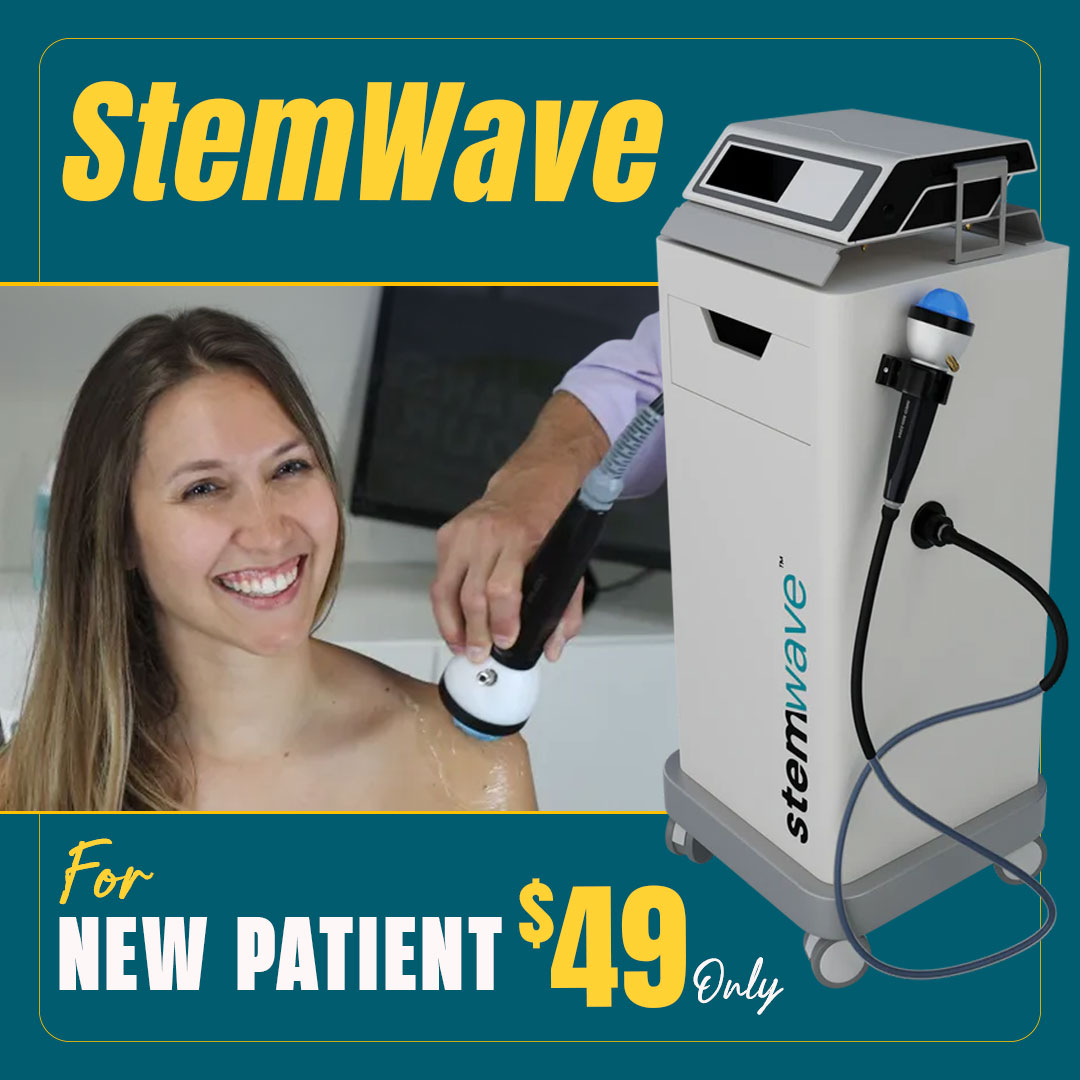Spinal Decompression
What is Spinal Decompression?
If you suffer from mild to chronic neck or back pain, spinal decompression may be the right treatment for you. It’s a non-invasive therapeutic treatment that relieves compression on your spinal discs. Our spines are supported by elastic discs between each vertebra that hold our spines together and allow our spines to move. As we age, gain weight, and constantly move around, we continually add pressure to our spines, which may compress our spinal discs and throw our vertebrae out of alignment. Compression on the spine can lead to pinched nerves, bulging discs, or herniated discs, all adding more pressure to surrounding spinal nerves, resulting in greater pain. Spinal decompression alleviates pressure from your spine, discs, and joints by using a motorized table or device to realign your spine.
Non-surgical spinal decompression uses negative pressure to create a vacuum-like effect to pull back bulging or herniated discs and relieve pressure off the surrounding spinal nerves. The vacuum effect readjusts your spinal discs to their normal confines and promotes proper healing by drawing in essential fluids and nutrients that benefit disc elasticity.
KDT Decompression Table: The Key to Pain Relief
The KDT Decompression Table is one of the most effective tools in treating neck and back pain. It is a motorized table that allows practitioners to target key areas in your neck or spine that are compressed.
KDT Decompression Systems have been developing decompression techniques for the past 12 years, and their product is the latest breakthrough in neck and back pain relief. A popular choice among chiropractors, the KDT Decompression Table can manipulate the spine more effectively than other tables due to the various positioning options available that appeal to both patients and chiropractors for its comfort and operational ease. The table has adjustable planes for flexion, extension, side bending, and rotating—all helpful in positioning the patient comfortably and targeting key areas of tension.
Why use a KDT Decompression Table?
The various positioning options set the KDT decompression table apart from others, but the table also promotes spinal decompression and disc rehydration through negative pressure. Other tools intended to alleviate neck or back pain apply the theory of linear traction or the process of using weights to stretch and lengthen the spine. However, KDT tables operate differently, as linear traction may lead to muscle spasms or other painful effects. The KDT decompression table aligns the spine without adding tension. Back and neck pain is relieved by positioning the patient’s body and gently pulling their spine to relax the back. The latest model, the KDT Neural-Flex, comes equipped with different pre-programmed traction and vibration settings that fluctuate in intensity to help relax the patient’s back. Once relaxed, negative pressure is induced to target affected spinal discs and realign your spine. If you would like to learn more about spinal decompression or if spinal decompression is the right treatment for you, call us to schedule a consultation.
What is the theory behind decompression? How does it work?
An experimental study has shown that in non-degenerated, but bulging discs (something your MRI or CT scan would show), decompression can lower the pressure inside the disc. This negative pressure may then draw or suck the displaced disc material more towards the center of the disc and away from your nerves. For many patients this can mean pain relief because a compressed nerve is a painful nerve. If the pressure on the nerve is released, it can begin to heal. Spinal Decompression is designed to assist the body's natural tendency to heal itself because Mother Nature sometimes needs a little help. If the disc can be moved even a small amount away from the nerve, this can be enough to decrease inflammation and irritation. We need more studies to fully understand why patients can improve when they receive this type of treatment and which types of disc problems respond the most.









